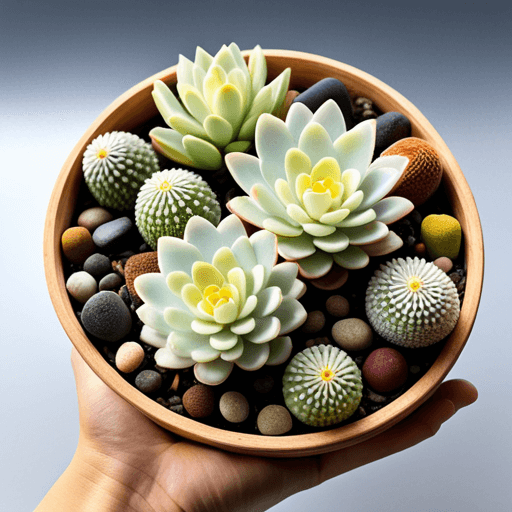Welcome to our blog post, where we uncover the secrets of the fascinating Lithops plant, also known as the “Living Stone.” This unique succulent hails from the arid regions of Southern Africa and has captured the hearts of plant enthusiasts worldwide. Join us as we dive into the world of Lithops and explore the tips and tricks for caring for these mesmerizing desert dwellers. Let’s embark on this botanical journey together!
Table of Contents
The Enigma of the Lithops Plant
Lithops plants are true marvels of nature. Their name, derived from the Greek words “lithos” meaning stone and “ops” meaning face, perfectly describes their appearance. These succulents have evolved to mimic stones, blending seamlessly with their arid surroundings as a survival strategy. This camouflage protects them from herbivores and allows them to withstand the harsh desert conditions.
Unveiling the Beauty of Lithops
Various Species and Colors
Lithops come in a mesmerizing array of species and colors. From the vibrant hues of red, orange, and yellow to the more subtle tones of green and brown, each Lithops plant showcases its unique personality. Their distinctive patterns and textures add an element of intrigue to any succulent collection.
Delicate Blooms
Although Lithops are known for their stone-like appearance, they surprise us with delicate blooms that emerge from their center. The daisy-like flowers range in color from white to yellow, and their arrival is a much-anticipated event for plant enthusiasts. The blossoms bring a burst of life to these resilient desert dwellers.
Caring for Your Lithops
Light and Sun Exposure
Lithops thrive in bright sunlight, mimicking their natural habitat. Place them in a location where they can bask in the sun for several hours each day. However, be cautious of intense midday sun, as it can scorch the delicate foliage. Finding the right balance is key to ensuring optimal growth.
Well-Draining Soil
Lithops have specific soil requirements. They prefer well-draining soil that mimics the gritty, rocky texture of their natural habitat. A mixture of cactus potting mix and perlite or pumice works well to provide the proper drainage and aeration necessary for their roots to thrive.
Watering Wisely
One of the most crucial aspects of Lithops care is proper watering. These desert plants have adapted to survive in arid conditions, so overwatering can be detrimental. Allow the soil to dry out completely between waterings, and be mindful of seasonal variations. During their dormant period in winter, reduce watering to mimic the natural rainfall patterns of their native environment.
Temperature and Humidity
Lithops are accustomed to hot, dry climates, so they prefer warmer temperatures. They can tolerate a wide range of temperatures, but it’s important to protect them from frost or extreme heat. Aim for a temperature range of 60-85°F (15-29°C) for optimal growth. Additionally, Lithops thrive in low humidity environments, so avoid overly humid conditions.
Overcoming Challenges: Common Issues and Solutions
Shriveling and Wrinkling
If you notice your Lithops becoming shriveled or wrinkled, it may be a sign of underwatering. Give them a thorough soak, ensuring that the water reaches the roots. Gradually increase watering frequency until the plant plumps up again. However, be cautious not to overwater, as this can lead to root rot and other issues. Finding the right balance is key to maintaining healthy Lithops.
Yellowing or Mushy Leaves
Yellowing or mushy leaves can indicate overwatering or poor drainage. Check the soil moisture levels and adjust your watering accordingly. If the soil is consistently wet, consider repotting your Lithops in a well-draining mix. Trim off any mushy or diseased leaves to prevent further damage and allow the plant to recover.
Pest Infestations
Lithops are generally resistant to pests, but they can occasionally fall victim to mealybugs or spider mites. Regularly inspect your plants for any signs of infestation, such as webbing or cotton-like clusters. If you spot pests, isolate the affected plant and treat it with an appropriate insecticide or a solution of neem oil and water. Always follow the instructions on the product label and take care not to harm beneficial insects.
The Joy of Growing Lithops
Cultivating Lithops can be a rewarding and joyful experience. These unique succulents bring a touch of the desert into your home, captivating you with their resilience and beauty. As you care for your Lithops, you’ll witness their fascinating growth patterns and eagerly anticipate the emergence of their delicate flowers.
Remember, each Lithops plant has its own character, so take the time to observe and appreciate its individuality. Embrace the challenges and joys of tending to these living stones, and let them inspire you to connect with the wonders of the natural world.



